.jpeg?width=1600&name=6%20Simple%20Tips%20for%20Selling%20on%20Amazon%20(That%20Require%20Almost%20No%20Effort).jpeg)
Struggling when it comes to selling on Amazon? You’re not alone.
Although Amazon accounts for 41% of all online sales, few individual sellers are actually considered “top earners.”
In fact, 43% of independent sellers say it takes between 6 months and two years to become profitable. The same research notes a similar percent of sellers have earned less than $25,000 in profits.
Like it or not, you’re competing against millions of independent sellers on Amazon.
Anything you can do to optimize your presence for sales is a plus. Below are five quick and easy tips for selling on Amazon and improving your storefront faster.
1. Increase Your Products’ Visibility with Amazon SEO
Food for thought: 53% of digital product searches begin on Amazon.
When shoppers are hunting for products via Amazon, discoverability depends largely on the keywords your products are targeting. That means you need to align your keyword strategy with what shoppers are actually using in product search queries.
You don’t need to be an SEO wizard to figure out which keywords to use. Start with queries that already send people to your products. If you need to brainstorm further, resources like Ahrefs’s Amazon keyword tool can help you uncover additional ideas.
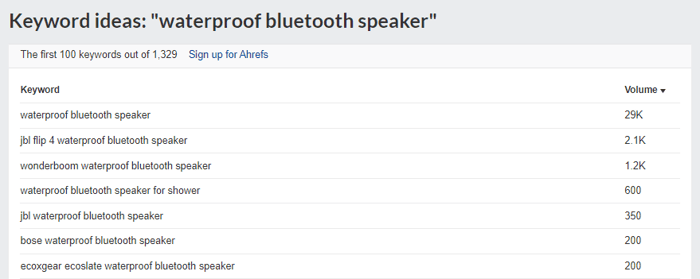
These keywords should be used across your product titles and descriptions where appropriate. You’ll notice that many target keywords on Amazon are long-tail queries made up of three or more words.
Shoppers and the Amazon algorithm both favor long-tail terms as they help people narrow down their product searches faster. Here are a few examples of how to take a shorter search term and translate it into a longer-tail, specific term:
- “LED lights” >>>“LED strip lights with remote”
- “Black leggings” >>>“high-waisted full-length black legging”
- “Socks” >>> “breathable running socks”
Notice how so many top-selling products on Amazon have long-tail keywords in their titles? That’s no accident!
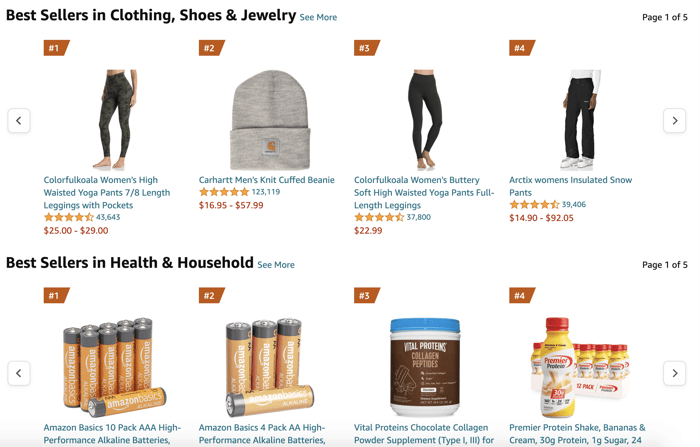
Also, keep in mind Amazon serves products based on what they perceive as having the best odds of selling. That means your seller rating matters, too. This speaks to the importance of positive Amazon product reviews and killer product imagery alongside relevant search terms.
2. Showcase Product Images that Attract and Assure Buyers
Speaking of imagery, product photos are essential to selling on Amazon.
In fact, 40% of consumers say they need to see multiple product photos in various settings before they’re willing to make a purchase online.
Depending on the creatives you currently have on hand, you may not need to do a full-blown product photoshoot. Here are some quick tips for leveling up your Amazon imagery
- Don’t be shy about uploading a variety of photos featuring different perspectives and settings. That said, try to put your most appealing photos first. Ideally, this would include your product in a real-world setting or featuring a person.
- Piggybacking on the point above, your pictures should tell shoppers everything they need to know about your product before they scroll through the description. For example, what does it look like in action? What makes it special? Couple your photos with breakdowns of key materials or benefits.
- Make sure you’re using high-quality images!
- Avoid featuring too many “stock” photos. Although Amazon’s photo guidelines require you to publish at least one picture against a white background, these types of images shouldn’t dominate your product listings.
- Make an effort to match your product photos with your brand and customer aesthetic.
Check out the example below that puts all of the tips above into action, particularly the last one. This listing features product photos in a real-world setting, helping shoppers visualize what the item would look like in their own homes.
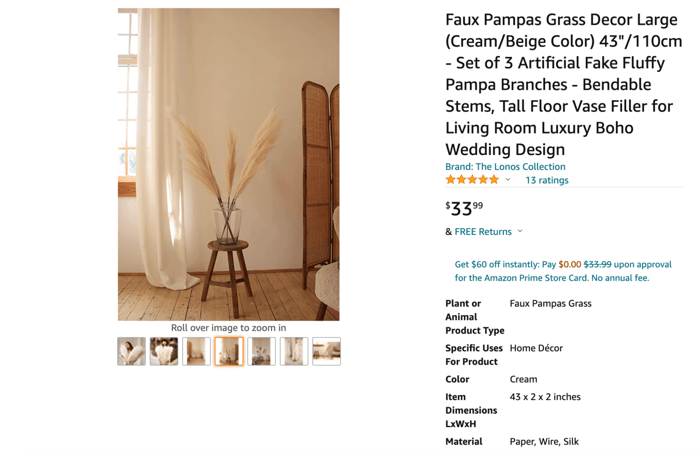
The same goes for the photo below which features the product in the hands of an actual person.
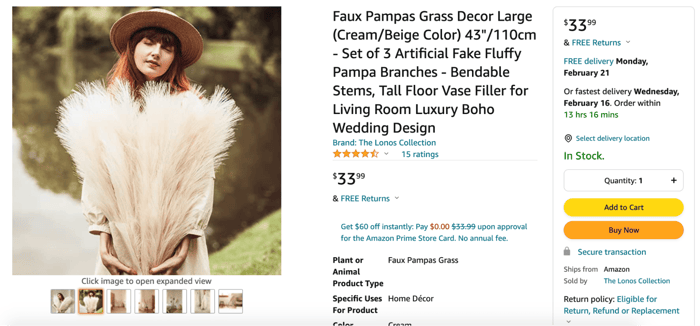
Looks like something you might see on Instagram, right? This is all the more reason to use Amazon creators as part of your marketing strategy.
3. Clean Up Your Product Copy to Focus on Benefits and Key Features
Pop quiz: should you highlight benefits or features in your Amazon product copy?
Ideally, you should put both front and center throughout your listings.
Rather than rattle off matter-of-fact details, try to put your copywriting chops to the test. Selling on Amazon means crafting product descriptions that build trust and reassure shoppers at the same time.
Make a point to answer the following questions in any given product description:
- What problems does your product solve? How does it make your customers’ lives easier?
- What makes your product better? Is it more durable, longer-lasting or higher-quality?
- What makes your brand different from the competition?
Focusing on problem-solving and details that make your product different are key to standing out in the crowded landscape of Amazon.
Let’s look at an example from Govee and their LED light strips that boast over 300 positive reviews and an “Amazon Choice” distinction. The copy emphasizes details that make their product unique versus regular LED lights. Coupled with phrases like “Sync with Music” and “Smart App Function,” shoppers can zero in on the key differentiators at a glance.
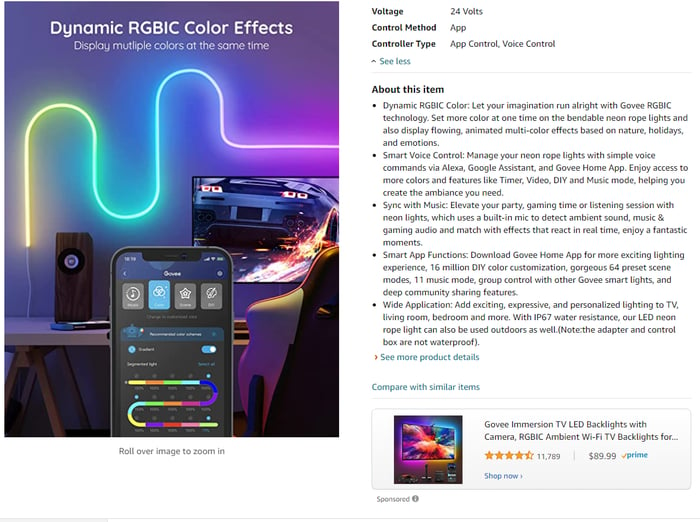
Notice how they don’t skimp on their product copy, either. Making maximum use of this real estate allows brands to not only hype up their products but also nail a few long-tail keywords in the process. Apply the same rules to your own product listings.
4. Fine-tune Your Product Pricing to Maximize Sales
It’s no secret that pricing matters to customers.
And if you’re not pricing competitively, selling on Amazon is going to be tough.
After all, you can’t blame shoppers for not scrolling to page 13 to buy products that are marked up 50%.
Pricing on Amazon is a sort of science in and of itself. That said, here are some basic tips to maximize profits without micromanaging your product price point:
- Start by defining your “bottom line,” minimum price. Given the various fees and costs associated with selling on Amazon, you obviously don’t want to price yourself too low. Conventional wisdom and what we know about pricing psychology also says that defaulting to the lowest prices possible can hurt your brand’s perception.
- Brainstorm the maximum you’d be comfortable charging for any given product. BigCommerce recommends looking at page one of Amazon listings in your category and double-checking that your upper price falls within 20% of what you see. This ensures that you aren’t needlessly overcharging or pricing out potential customers.
- Try to come up with a middle-ground price based on the numbers above. You can then set your pricing parameters within Amazon so your pricing strategy is a bit more “set and forget.”
Figuring out optimal pricing on Amazon can be overwhelming, so don’t sweat it if you need to experiment. If you’re not already using Amazon's own repricing tool, it can be a big help.
5. Build More Positive Word-of-Mouth for Your Products Beyond Amazon
Selling on Amazon means building a promotional presence beyond the platform.
Working with creators is one of the best ways to generate content to feature and promote throughout your product listings (think: customers photos).
But creators can also educate their own engaged audiences about your brand and awesome products. That’s word-of-mouth marketing in action!
We’ve seen firsthand how creators crush it on Amazon. For example, Physician’s Choice let Statusphere develop a custom creator campaign that not only showcased their product but also clued in potential customers on where they could purchase it. Beyond social proof, this strategy empowers creators to funnel their followers directly to your Amazon storefront.
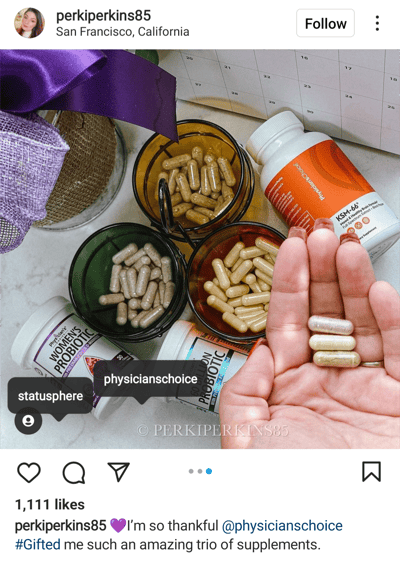
Source: @perkiperkins85
The beauty of these campaigns is that they’re both measurable and scalable. Promoting your brand presence off-Amazon is a prime way to boost sales and generate ongoing customer content to fuel your efforts on Amazon as well.
 Need Help Selling on Amazon? We Can Do the Heavy Lifting.
Need Help Selling on Amazon? We Can Do the Heavy Lifting.
If you want to stand out in the sea of storefronts, these Amazon selling tips can help.
And if your current promotional tactics aren’t moving the needle, it’s probably time to take action beyond the platform itself.
With the help of the right creators, you can raise awareness and scale your sales at the same time.
That’s where we come in. The best part about working with Statusphere? We set up, run and measure your creator campaigns from start to finish. Get in touch with one of our consumer-to-consumer marketing experts today to chat about boosting your brand’s visibility on Amazon sooner rather than later.
.jpeg)